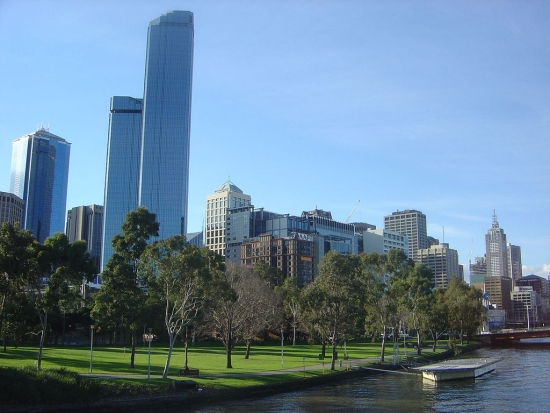Melbourne has been ranked as a top Global University City, as well as a top Global Innovation City. Last month, it was placed first in the Economist Unit’s Liveability Report for the third year in a row.

The city has taken a very active stand on sustainability. In 2002, Melbourne established its “Zero Net Emissions by 2020” programme.
To encourage owners of commercial buildings to improve energy efficiency, the City developed a programme called 1,200 Buildings. The name is a reference to its goal, which is to get two-thirds of owners of the city’s 1,800 buildings to retrofit them with updated energy and water technology. Melbourne beat Berlin and New York City to take the top prize at C40 & Siemens City Climate Leadership Awards in London for 1,200 Buildings scheme.
Melbourne has a number of buildings which are excellent candidates for retrofitting. Office buildings with more than 5,000 square meters of leasable space that were constructed between 1950 and 2000 are prime targets for lowering energy use by 38 per cent, which is the programme’s goal.
Convincing commercial property owners to install solar panels and other eco-friendly updates may be another story. When the programme was introduced five years ago, a general lack of knowledge about retrofitting was one barrier to its success. The second was that the programme was introduced during the height of the credit crunch, which made getting financing for projects challenging. The third barrier was what is known as the split incentive; owners are hesitant about making improvements where the primary benefits are transferred to tenants.
The city is now a clearinghouse for information on auditing, costs, benchmarking, consultants, and other issues surrounding this process. The city also offers seminars and posts tutorial videos, fact sheets, reports, and case studies on its website.
The city developed a strategy with the State of Victoria to act as an intermediary between owners and banks to facilitate the loan process to make financing retrofits easier. These “environmental upgrade agreements” (EUAs) include a clause where owners and tenants agree to share the costs.
Five EUAs have been brokered this year with a value of $12.6 million. City officials concede that this is a bit of a slow start, but the mechanism is a new concept and may take a while to build momentum.
The City estimates that 140 buildings underwent retrofit operations in 2011. The results of a biannual retrofit survey will be released in the next two months. If the city can get 38 per cent energy use reduction from 1,200 of its office buildings, it would add up to 383,000 tons of greenhouse gas emissions per year, or 7.6 million black balloons.
Previous Post
Top Tips for a Successful Retail Business